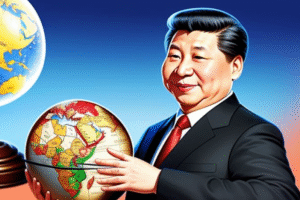$SOYB $CORN #Soybeans #Agriculture #MarketTrends #TradeTensions #CommodityPrices #Investing #Soymeal #Futures #FinancialNews #AgriculturalEconomics
Will Rising Trade Tensions Push Soybean Prices Below $10? Learn What’s Happening!
In the latest soybeans news, the market experienced significant pressure on Friday due to escalating trade tensions. Prices dipped by 14 to 16 cents, with November futures down 11 ¼ cents for the week. This downward trend raises concerns about whether soybean prices can maintain their crucial $10 threshold.
The cmdtyView national average Cash Bean price fell by 15 ¾ cents, settling at $9.31. This decline signals a potential shift in the market, prompting investors to assess the implications of ongoing trade disputes. Soymeal futures also saw losses, dropping $1.60 to close at $2.30 for the day.
Understanding the Market Dynamics
As trade tensions rise, they create uncertainty in agricultural markets, particularly for commodities like soybeans. The current geopolitical climate, marked by strained relations between major trading partners, has led to increased volatility. Investors are now more cautious, keeping a close eye on developments that could further impact prices.
Soybean prices are influenced by various factors, including weather conditions, export demands, and international trade policies. Given that soybeans are a staple in animal feed and biofuel production, any disruption in supply chains can have far-reaching consequences. Furthermore, with the upcoming harvest season, farmers and traders are anxious about how these tensions might affect their market strategies.
The Broader Economic Implications
Rising trade tensions do not merely affect soybeans; they resonate throughout the agricultural sector and broader economy. According to experts, the implications can lead to inflationary pressures if supply chains are disrupted. In the past, similar scenarios have resulted in price increases across various commodities, further straining consumers and businesses alike.
Additionally, the ongoing trade disputes could compel farmers to alter their planting strategies. As prices fluctuate, many may reconsider what crops to grow, potentially leading to a shift in agricultural patterns. This shift could have long-term implications for food security and market stability.
What Lies Ahead for Soybean Prices?
Looking forward, the key question remains: will rising trade tensions push soybean prices below $10? If negotiations do not yield favorable outcomes, we may see a continued decline in prices. Conversely, if a resolution is reached, there could be a rebound as market confidence returns.
Investors should stay informed about the latest developments in trade negotiations and the overall economic environment. Monitoring these factors will be crucial for making sound investment decisions in the agricultural sector.
Conclusion
In conclusion, the current soybean market is grappling with a mix of challenges stemming from increased trade tensions. With prices hovering around the critical $10 mark, stakeholders must remain vigilant. Understanding the interplay of various factors influencing soybean prices will be essential for anyone involved in the agricultural market.
For more insights and updates on stock market trends, visit our stock news section.
As the situation evolves, keep an eye on how these trade dynamics will shape the future of soybeans and other commodities.











Comments are closed.